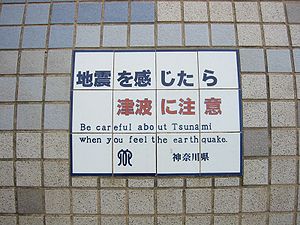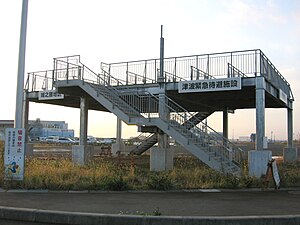 Image via WikipediaI think we should all be getting now how important social media has become in politics (Iran, Egypt, Tunisia, Wisconsin, etc.) and in natural disasters such as Haiti and now with Japan. The earthquake and tsunami are terrible disasters and my focus on social media is in no way meant to trivialize them, on the contrary, social media will be an important component in the international response. Social media and networks after the tsunami were the only way millions of people in Japan were getting information about the scope of the disaster. So many people photographed, filmed and tweeted the tsunami that not only do researchers now have a historically unprecedented amount of data available, but lives were saved. Trapped people were able to tweet or text their location and get help. Families were able to communicate for hours after the event to let one another know where they were and what was happening.
Image via WikipediaI think we should all be getting now how important social media has become in politics (Iran, Egypt, Tunisia, Wisconsin, etc.) and in natural disasters such as Haiti and now with Japan. The earthquake and tsunami are terrible disasters and my focus on social media is in no way meant to trivialize them, on the contrary, social media will be an important component in the international response. Social media and networks after the tsunami were the only way millions of people in Japan were getting information about the scope of the disaster. So many people photographed, filmed and tweeted the tsunami that not only do researchers now have a historically unprecedented amount of data available, but lives were saved. Trapped people were able to tweet or text their location and get help. Families were able to communicate for hours after the event to let one another know where they were and what was happening.
The Red Cross also has a mobile giving program: you can text “REDCROSS” to 90999 to donate $10.
Groupon has an online offer inviting customers to donate $5, $10, or $25 to support International Medical Corps’ emergency efforts in Japan. They have raised $16,000 in donations so far.
Related articles
- Tsunami Devastates Japan: How Social Media Reacted (progressivemediaconcepts.com)
- Japan Tsunami & Earthquake – Use of Twitter, Facebook, Skype & other Social Networks (bubblecube.wordpress.com)
- Japan’s Disaster Proves Social Media Is Vital (hudsonhorizons.com)
- Social media in a tsunami (ucfsocialmedia.wordpress.com)
- Twitter Reacts To Massive Quake, Tsunami In Japan (mashable.com)





